
The Revolutionary Committee of the Chinese Kuomintang (RCCK), also commonly known, especially when referenced historically, as the Left Kuomintang or Left Guomindang, is one of the eight minor political parties in the People's Republic of China under the direction of the Chinese Communist Party.

The China National Democratic Construction Association (CNDCA), sometimes translated as the China Democratic National Construction Association (CDNCA), also known by its Chinese abbreviation Minjian (民建), is one of the eight minor political parties in the People's Republic of China under the direction of the Chinese Communist Party. It is the third-ranking minor party in China.

The China Association for Promoting Democracy (CAPD) is one of the eight minor political parties in the People's Republic of China under the direction of the Chinese Communist Party. The party is a member of the Chinese People's Political Consultative Conference. It was formed on 30 December 1945, and mainly represents high-level intellectuals engaged in education and cultural publishing media.
Sang Guowei was a Chinese pharmacologist, physician and politician.

The Li Keqiang Government was the Central People's Government of China from 15 March 2013, when Premier Li Keqiang took office, until March 2023. It succeeded the Wen Jiabao government. Premier Li is ranked only second to Party general secretary Xi Jinping among 7 members of the 18th and 19th Politburo Standing Committee, top decision-making body of the Chinese Communist Party (CCP).

The 2nd National Congress of the Chinese Communist Party was held in the Shanghai International Settlement at the apartment of Li Da of 625 Pude Lane, South Chengdu Road, between July 16 and July 23, 1922. The congress was attended by 12 representatives, representing 195 members of the Chinese Communist Party (CCP). The congress succeeded the 1st National Congress of the Chinese Communist Party and preceded the 3rd National Congress of the Chinese Communist Party.

The 2017 China floods began in early June 2017. More than 14.9017 million people in 10 provinces and municipalities and regions were affected, especially the southern and central provinces and regions of Guangxi, Guangdong, Hunan, Hubei, Jiangxi, Jiangsu, Anhui, Zhejiang, Shandong, Shaanxi, Yunnan, Sichuan, Gansu and Henan. Hunan was the hardest hit. A total of 18,100 houses were destroyed, and more than 9,821-square-metre (105,710 sq ft) of crops were inundated.
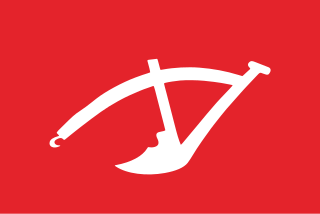
The Plough flag is a red banner with a white or yellow plough positioned in the center of it, widely used in the period of the Northern Expedition as the flag of the Chinese Peasants' Association.

The Chinese National Peasants' Association, otherwise known as the Chinese Peasants' Association, was a peasant organization created in 1927 with the specific aim of transforming the peasantry via Socialism. It was led by the Chinese Communist Party until its dissolution in 1964. Its successor was the Chinese National Poor and Lower-Middle Peasants' Association, created in 1964 and dissolved de facto in 1986.
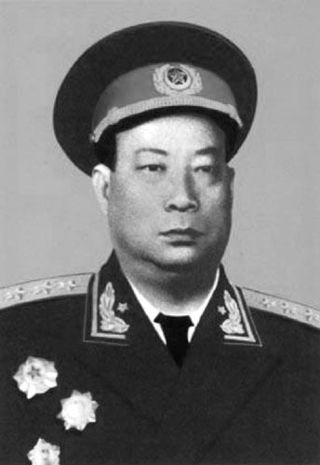
He Bingyan was a colonel general in the People's Liberation Army of the People's Republic of China from Hubei. He was known as the “one-armed General (独臂将军)” for his injuries suffered during the Long March.
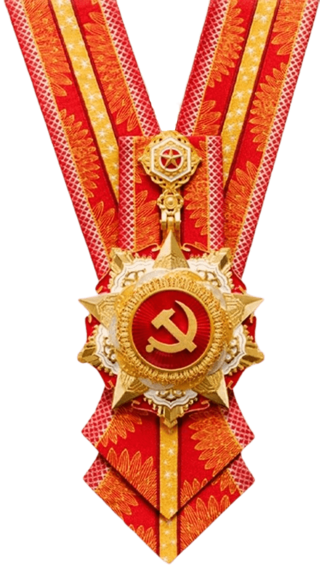
The July 1 Medal is a decoration of the People's Republic of China awarded by the General Secretary of the Chinese Communist Party, party leader and state paramount leader. It is the highest award given to the Chinese Communist Party (CCP) members, constituted on July 22, 2017.

The commander of the PLA Air Force is the commanding officer of the People's Liberation Army Air Force (PLAAF). The current commander is Chang Dingqiu.
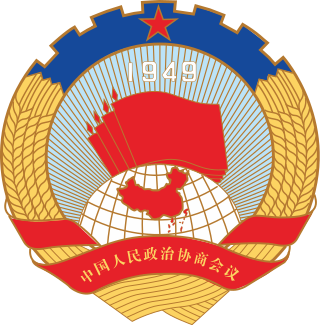
The Agriculture and Rural Affairs Committee of the Chinese People's Political Consultative Conference is one of ten special committees of the National Committee of the Chinese People's Political Consultative Conference, China's top political advisory body and a central part of the Chinese Communist Party's united front system.
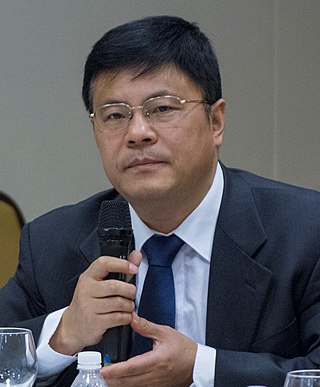
Xie Chuntao is a Chinese writer and politician currently serving as vice president of the Central Party School of the Chinese Communist Party.
The 20th Politburo of the Chinese Communist Party (CCP), formally the Political Bureau of the 20th Central Committee of the Communist Party of China, was elected at the 1st Plenary Session of the 20th Central Committee of the CCP on 23 October 2022 in the aftermath of the 20th National Congress. This electoral term was preceded by the 19th Politburo. Seven of the 24 members serve in the 20th Politburo Standing Committee.

Daxing Biomedical Industry Base, full name Zhongguancun Science and Technology Park Daxing Biomedical Industry Base, is a state-level economic and technological development zone in Tiangongyuan Subdistrict, Daxing District, Beijing, China. As of 2020, its census population was 10,201.
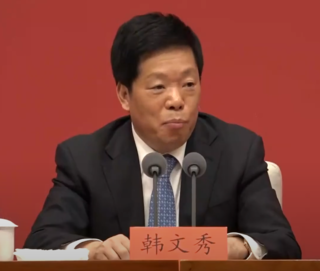
Han Wenxiu is a Chinese economist and politician, currently serving as executive deputy director of the Office of the Central Financial and Economic Affairs Commission and director of the Office of the Central Rural Work Leading Group.

Five Identifications as a term has been mentioned in many Chinese government and Chinese Communist Party (CCP) websites. It was proposed by General Secretary of the CCP, Xi Jinping. He has repeatedly emphasized its importance.
Jin Jingzhe is a Chinese physician of Korean ethnicity who specializes in cancer treatment. He was a delegate to the 13th National People's Congress. Jin is currently the deputy general director of Dandong First Hospital and was called the city's "leader of oncology".















